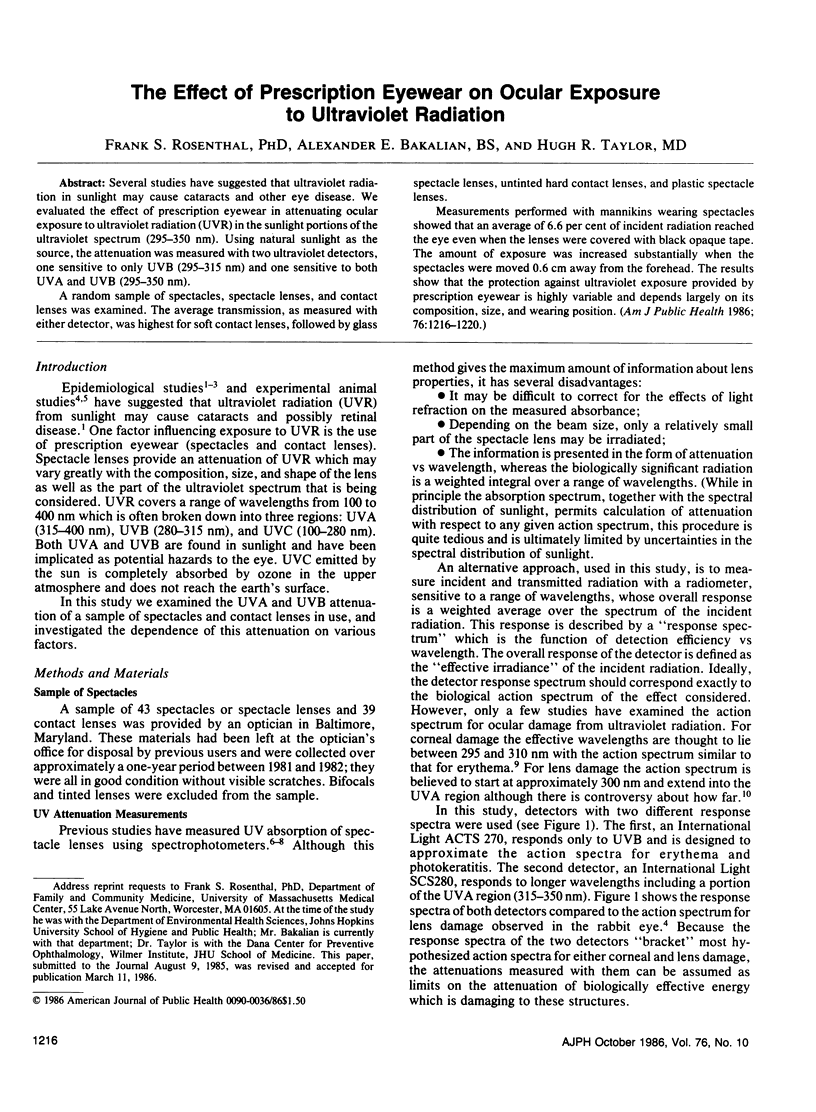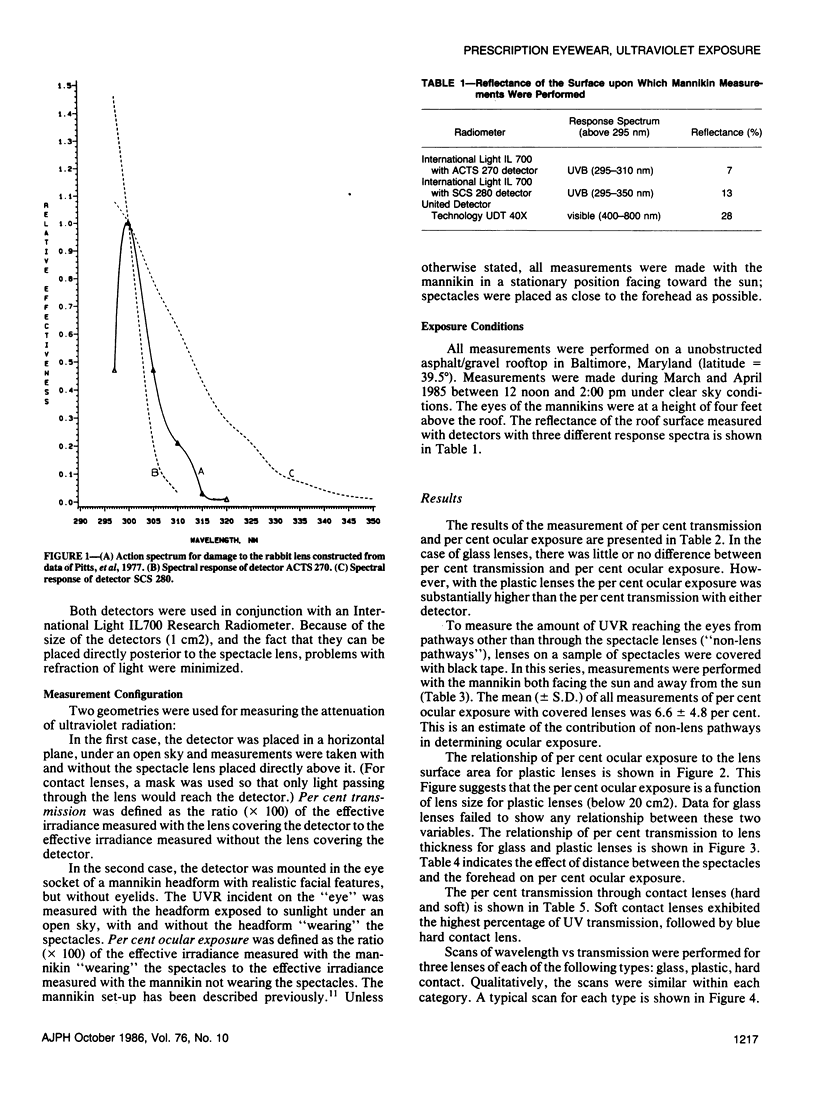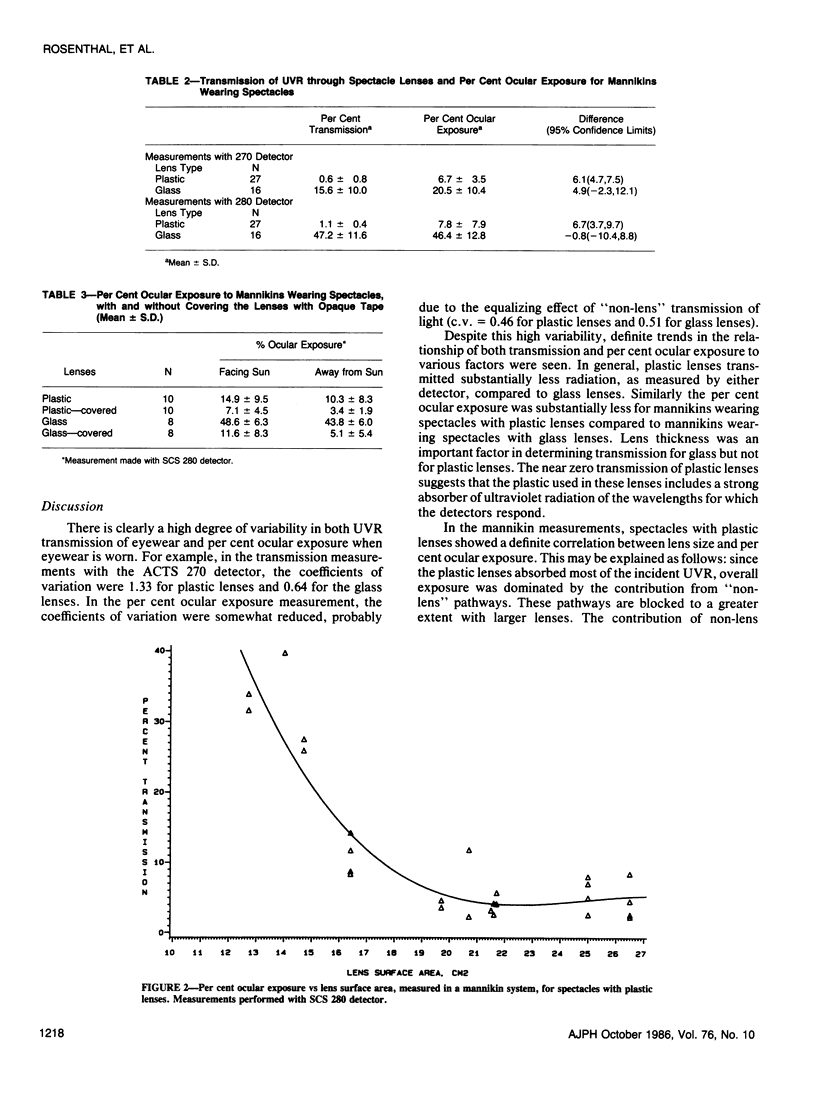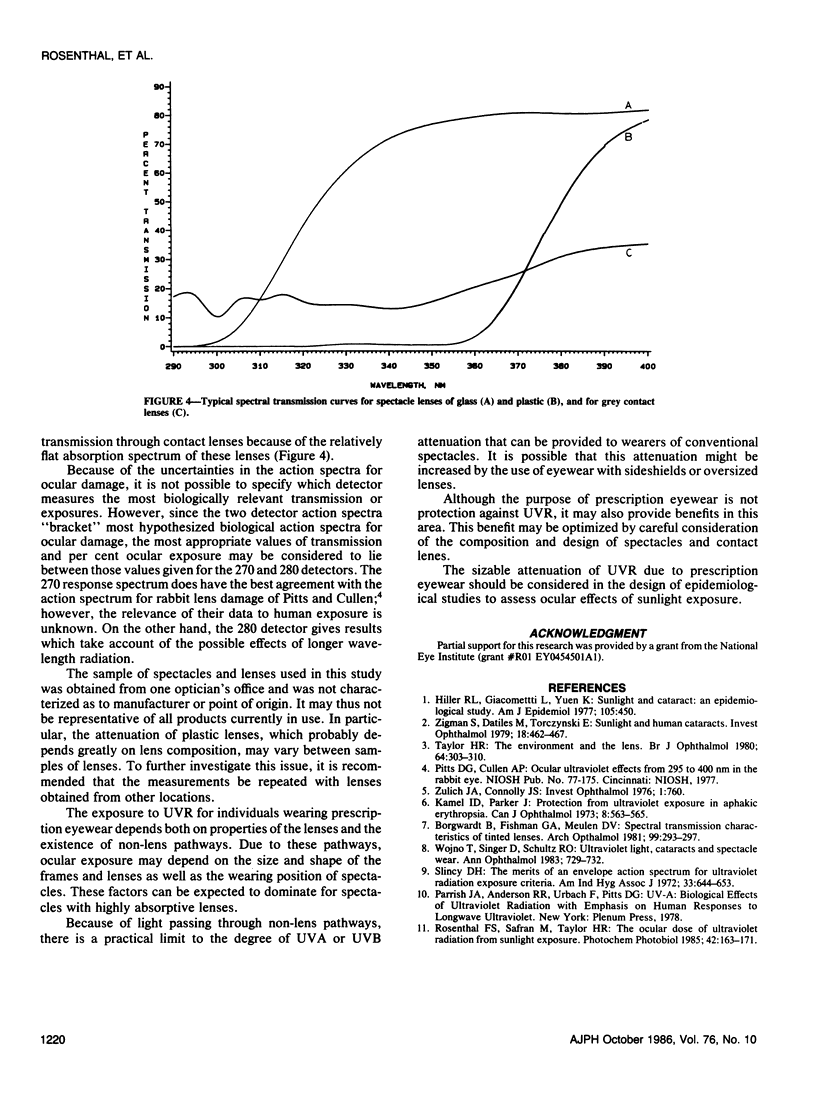Abstract
Several studies have suggested that ultraviolet radiation in sunlight may cause cataracts and other eye disease. We evaluated the effect of prescription eyewear in attenuating ocular exposure to ultraviolet radiation (UVR) in the sunlight portions of the ultraviolet spectrum (295-350 nm). Using natural sunlight as the source, the attenuation was measured with two ultraviolet detectors, one sensitive to only UVB (295-315 nm) and one sensitive to both UVA and UVB (295-350 nm). A random sample of spectacles, spectacle lenses, and contact lenses was examined. The average transmission, as measured with either detector, was highest for soft contact lenses, followed by glass spectacle lenses, untinted hard contact lenses, and plastic spectacle lenses. Measurements performed with mannikins wearing spectacles showed that an average of 6.6 per cent of incident radiation reached the eye even when the lenses were covered with black opaque tape. The amount of exposure was increased substantially when the spectacles were moved 0.6 cm away from the forehead. The results show that the protection against ultraviolet exposure provided by prescription eyewear is highly variable and depends largely on its composition, size, and wearing position.
Full text
PDF




Selected References
These references are in PubMed. This may not be the complete list of references from this article.
- Borgwardt B., Fishman G. A., Vander-Meulen D. Spectral transmission characteristics of tinted lenses. Arch Ophthalmol. 1981 Feb;99(2):293–297. doi: 10.1001/archopht.1981.03930010295015. [DOI] [PubMed] [Google Scholar]
- Hiller R., Giacometti L., Yuen K. Sunlight and cataract: an epidemiologic investigation. Am J Epidemiol. 1977 May;105(5):450–459. doi: 10.1093/oxfordjournals.aje.a112404. [DOI] [PubMed] [Google Scholar]
- Kamel I. D., Parker J. A. Protection from ultraviolet exposure in aphakic erythropsia. Can J Ophthalmol. 1973 Oct;8(4):563–565. [PubMed] [Google Scholar]
- Rosenthal F. S., Safran M., Taylor H. R. The ocular dose of ultraviolet radiation from sunlight exposure. Photochem Photobiol. 1985 Aug;42(2):163–171. doi: 10.1111/j.1751-1097.1985.tb01555.x. [DOI] [PubMed] [Google Scholar]
- Sliney D. H. [The merits of an envelope action spectrum for ultraviolet radiation exposure criteria]. Am Ind Hyg Assoc J. 1972 Oct;33(10):644–653. doi: 10.1080/0002889728506722. [DOI] [PubMed] [Google Scholar]
- Taylor H. R. The environment and the lens. Br J Ophthalmol. 1980 May;64(5):303–310. doi: 10.1136/bjo.64.5.303. [DOI] [PMC free article] [PubMed] [Google Scholar]
- Wojno T., Singer D., Schultz R. O. Ultraviolet light, cataracts, and spectacle wear. Ann Ophthalmol. 1983 Aug;15(8):729–732. [PubMed] [Google Scholar]
- Zigman S., Datiles M., Torczynski E. Sunlight and human cataracts. Invest Ophthalmol Vis Sci. 1979 May;18(5):462–467. [PubMed] [Google Scholar]
- Zuclich J. A., Connolly J. S. Ocular damage induced by near-ultraviolet laser radiation. Invest Ophthalmol Vis Sci. 1976 Sep;15(9):760–764. [PubMed] [Google Scholar]


